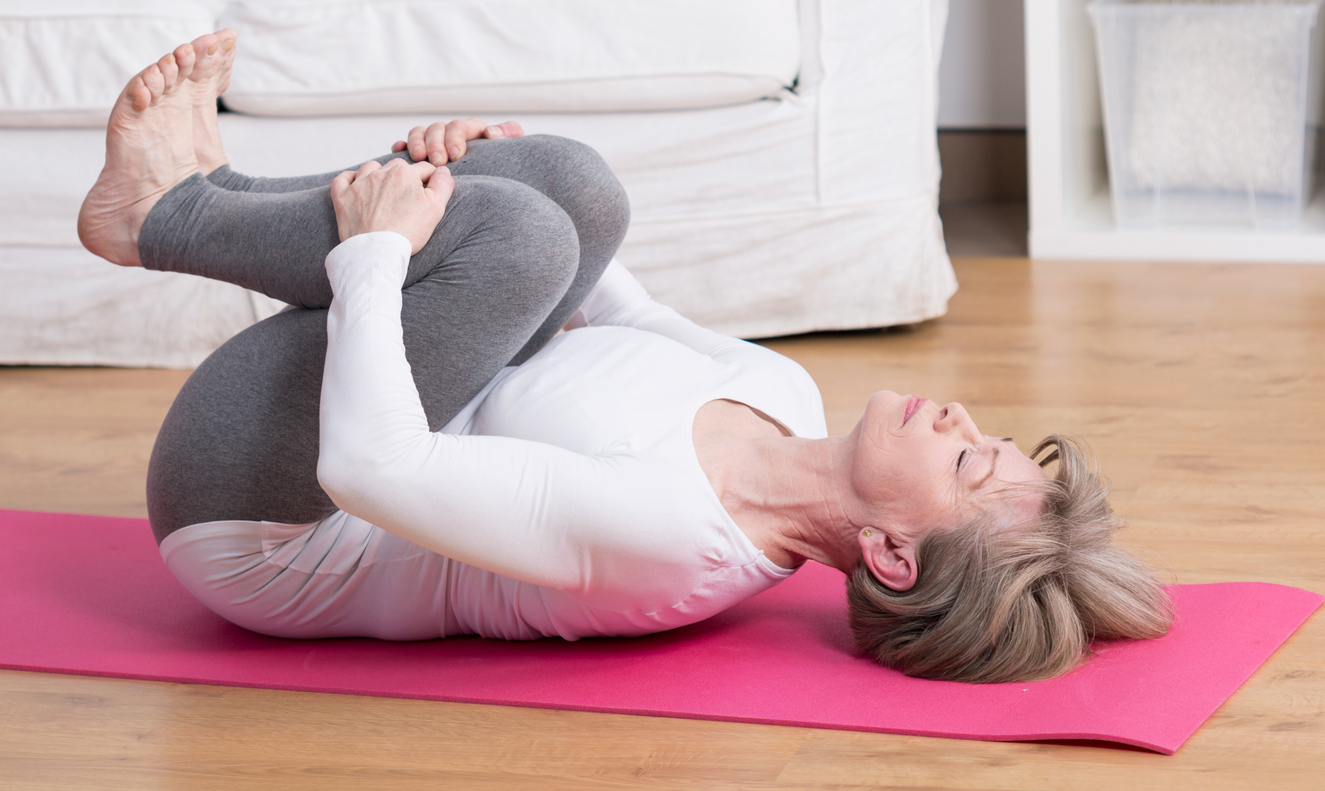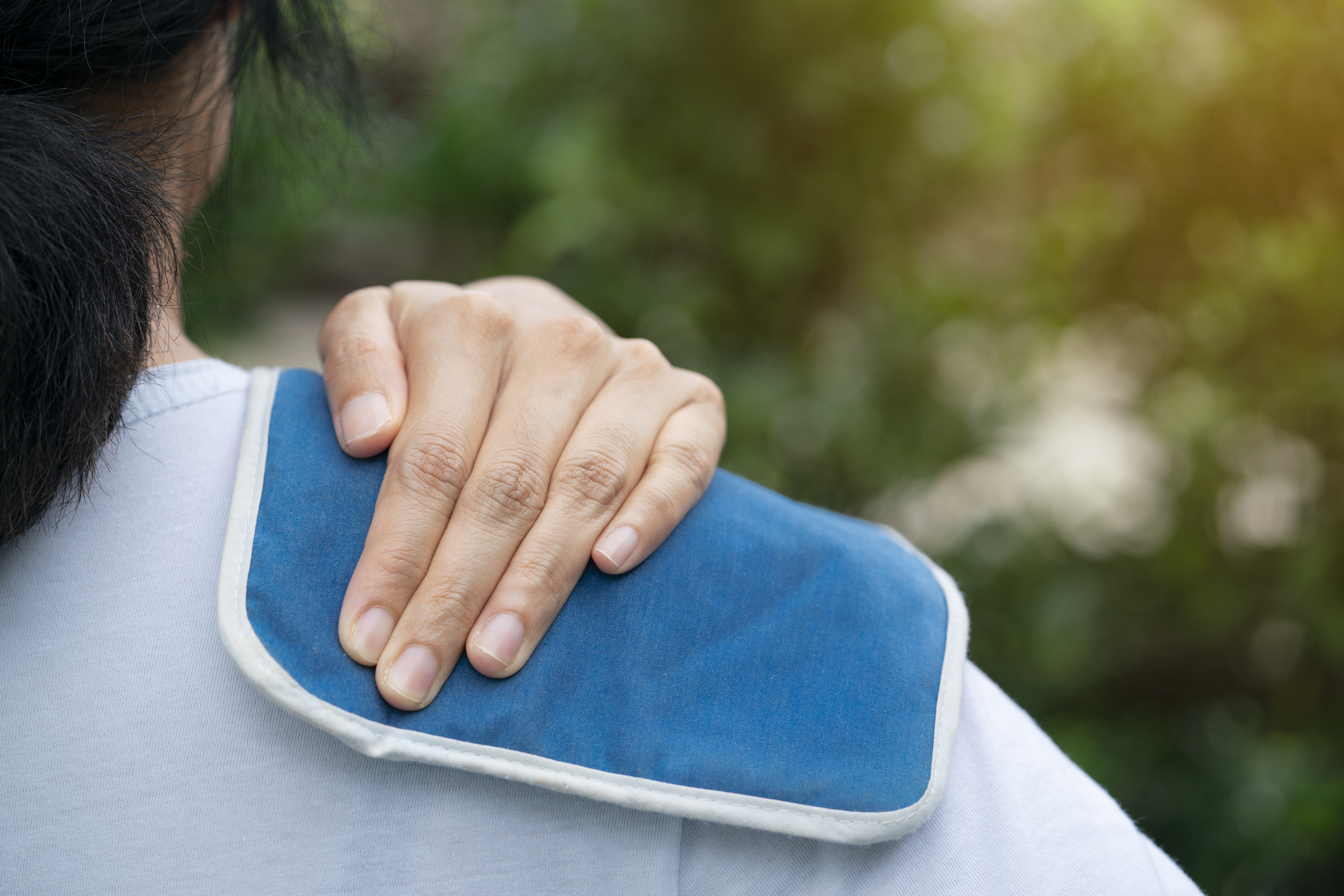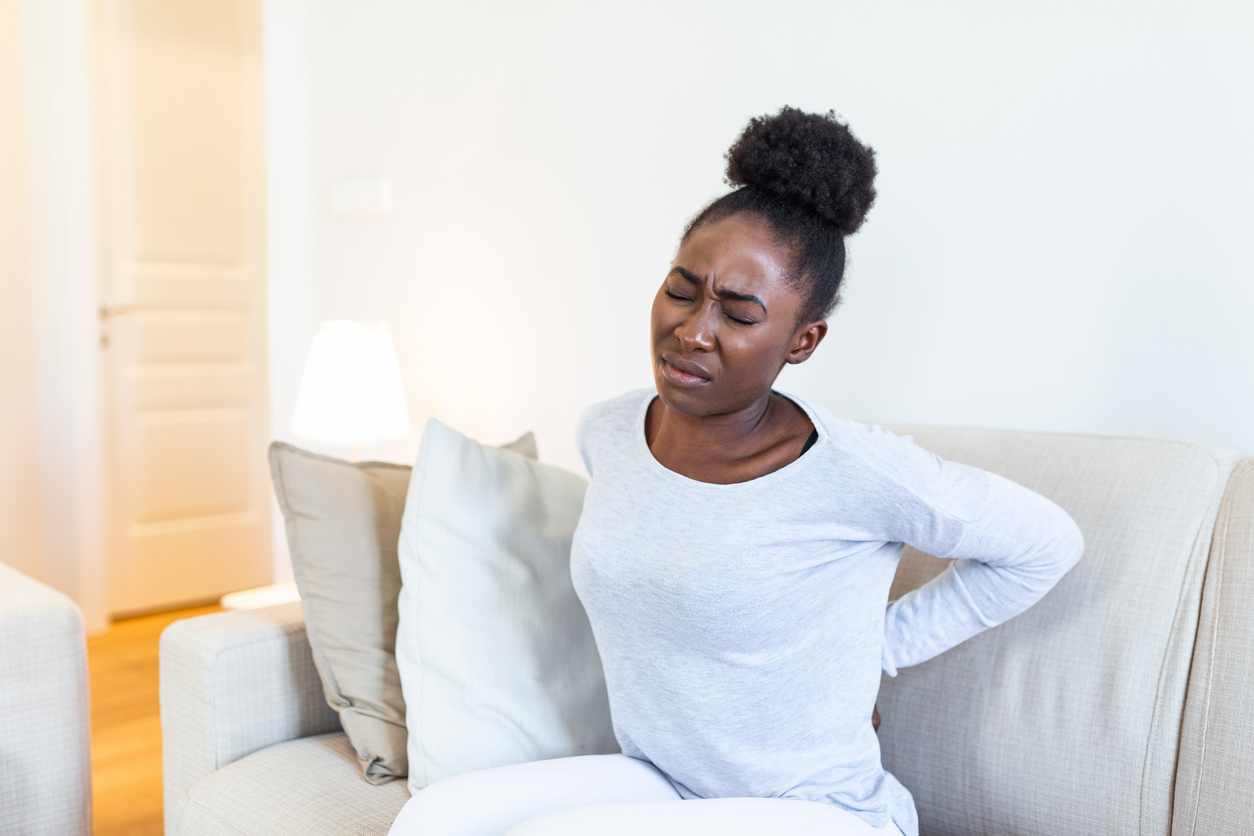Your upper back runs from the bottom of your neck to the base of your ribcage. Pain in this area is known as upper back pain or thoracic back pain and it's fairly common. It affects around 1 in every 10 people at some point in their lives.
Because the upper back is much more rigid than the lower back (the lumbosacral region of the spine), upper back pain is significantly less common than lower back pain. However, it can be just as painful and irritating.
There are a range of things you can try to help relieve pain or discomfort in your upper back at home.
What causes upper back pain?
It can be difficult to identify the cause of upper back pain, but it can be linked to irritation in the muscles and soft tissues of your back, poor posture or a muscle strain or sprain.
Other common causes of upper back pain include an accident or a sudden injury such as a fall, or whiplash. This happens when the upper body is thrown forward suddenly, e.g. in a car accident.
Sitting at a computer for long periods of time, carrying a backpack or performing repetitive movements can all lead to back pain as well.
Occasionally, upper back pain can be a sign of a medical condition such as osteoarthritis, osteoporosis or a slipped disc. A slipped disc is where a disc of cartilage in between the bones in your spine slips out of position and presses on a nerve.
Sharp, stabbing back pain that gets worse when you breathe in can be a symptom of a pulmonary embolism (a blocked blood vessel in your lungs).
Penetrating or dull pain that feels like it’s coming from the bones in your upper back can sometimes be a sign of bone or lung cancer.
If you're concerned about your back pain, or the pain is stopping you from doing your day-to-day activities or doesn't improve within a few weeks, you should see a doctor.

Self-care treatments for upper back pain
If you have pain in your upper or middle back, there are things you can try to help ease your symptoms at home.
Exercise
If you’re struggling to manage your pain, you might be tempted to rest in bed, but studies show this can make your pain worse in the long run.
Experts now think that exercise could be key to treating upper back pain. This is because exercise helps to ease stiffness, build up the muscles in your back and increase your flexibility. Exercise can also release endorphins -- a type of hormone that’s known to reduce pain.
You don’t have to do anything too strenuous to get these benefits either. Walking, swimming and going to the gym will all help, as will practicing yoga or pilates.
You can find some useful strengthening exercises in this guide to managing back pain.

Stretches
Back stretches can help to reduce upper back pain, and strengthen the muscles in your upper back to prevent future symptoms.
According to the Chartered Society of Physiotherapy, the following stretches may help.
Back stretches
- Lie on your back, with your arms above your head.
- Bend your knees, and roll them slowly to 1 side, keeping your feet flat on the floor.
- Hold for 10 seconds, and then slowly roll your knees back to the centre.
- Repeat 3 times for each side.
Deep lunges
- Take a step forward, and then kneel on the other knee, making sure that your front foot is pointing forwards.
- Lift your back knee up, and hold for 5 seconds.
- Repeat 3 times, and then swap legs and start again.
Leg stands
- Hold on to a wall for support, and bend 1 leg up behind you, holding your foot level with your hip.
- Hold for 5 seconds, then release your leg and lower it to the ground.
- Repeat 3 times for each side.
Pelvic tilts
- Lie down on your back, with your knees bent and your feet flat on the floor.
- Engage your core, and tighten your stomach muscles so that your back is flat against the floor.
- Hold for 5 seconds and then release.
- Repeat 5 times.
You should do these exercises every day, and continue them for at least 6-8 weeks to help prevent another injury.
Painkillers
Painkillers such as paracetamol can be used to treat most types of upper back pain. Speak to your pharmacist or doctor for further guidance on how to safely get and use these medicines.

Heat and ice packs
Applying a heat pack or hot water bottle to your back may help to relieve some pain and stiffness. An ice pack or a frozen bag of peas can also have the same effect, particularly to reduce any swelling.
Just make sure that you take steps to protect your skin from extreme temperatures by wrapping ice packs in a tea towel or a wash cloth before applying it to your back.
When to see a doctor about upper back pain
Most episodes of upper back pain go away on their own, normally after a few weeks or a few months. But there are times when pain in the middle or upper back can be a sign of a more serious condition.
You should seek immediate medical attention if your upper back is causing you pain and you:
- have difficulty passing or controlling urine
- lose control of your bowels, feel numb or have tingling around your back passage, genitals or buttocks.
- have chest pain
- have a high temperature
- lose weight without trying to
- have a swelling or deformity on your back
- feel weakness in your legs, or find that you're unsteady on your feet
- notice that your pain gets worse when you sneeze, cough or poo
- find that your pain doesn't improve after resting, or gets worse each night
- find that your pain is very severe and gets worse as time passes
- notice that your pain started after a serious accident like a car accident
- find that the pain is coming from between your shoulders
You should also see a doctor if you're worried, your back pain doesn't improve within a few weeks, or your pain is stopping you from doing your day-to-day activities, and making it hard to sleep.






